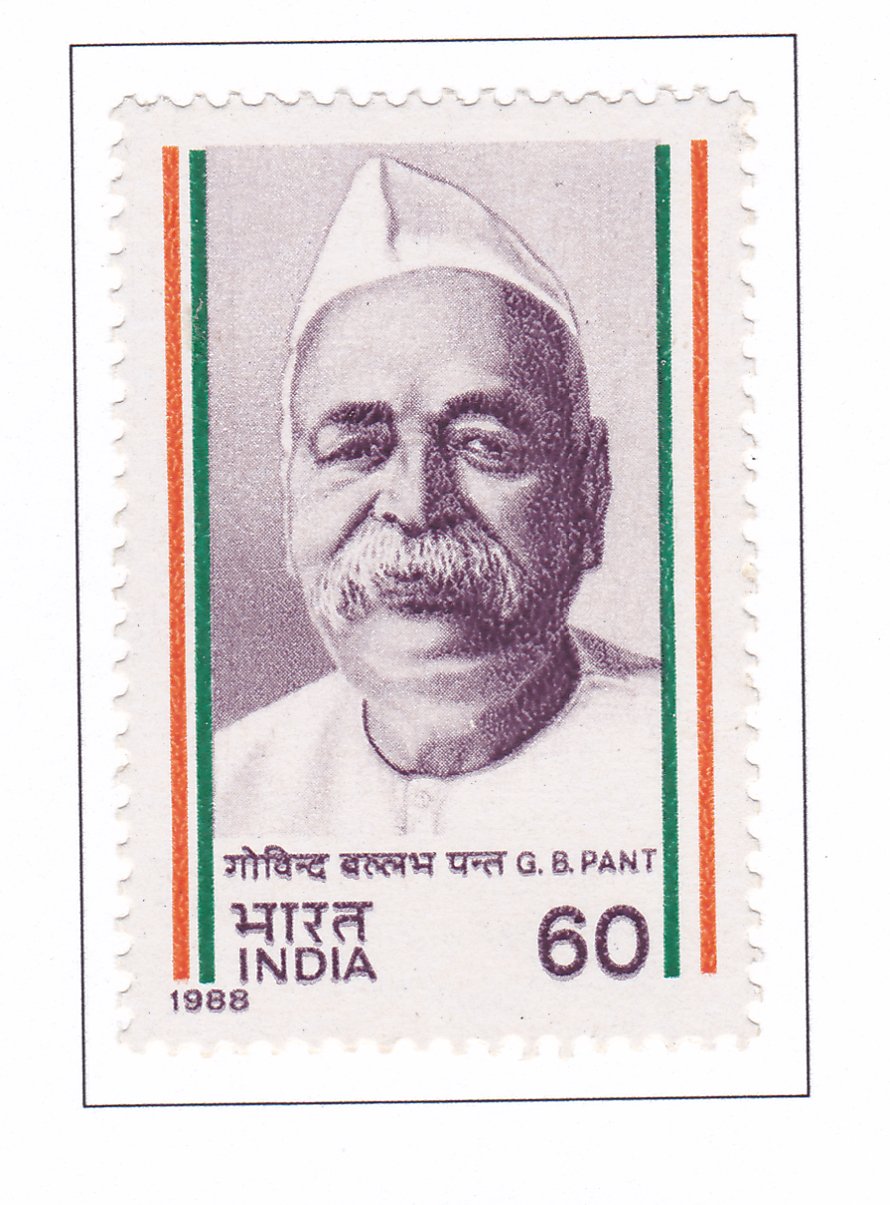Govind Ballabh Pant

Technical Data
| Stamp Set | India's Struggle for Freedom |
|---|---|
| Date of Issue | March 7, 1988 |
| Denomination | 60 p |
| Quantity | 1,000,000 |
| Perforation | Comb 13 |
| Printer | Security Printing Press, Nashik |
| Watermark | No Watermark |
| Colors | Multicolor |
| Catalog Codes |
Michel IN 1148 Stamp Number IN 1205 Yvert et Tellier IN 963 Stanley Gibbons IN 1290 |
| Themes | Famous people | Headgear | Men | Politicians |
Commemorative Stamp Set: Pandit Govind Ballabh Pant
Design Elements:
- Central Image: A dignified portrait of Pandit Govind Ballabh Pant, capturing his determined and patriotic spirit.
- Background Scenes:
- Prem Sabha and Kumaon Parishad, highlighting his early political contributions.
- The Congress Session of 1916, where he represented Kumaon.
- The Central Legislative Assembly, showcasing his parliamentary achievements.
- Symbols of Progress and Reform: Illustrations of the U.P. Tenancy Act, zamindari abolition, and agricultural development.
Cultural and Historical Significance:
Pandit Govind Ballabh Pant was a key figure in India’s struggle for independence and post-independence development. His contributions ranged from agrarian reforms to constitutional drafting, making him a significant architect of modern India. The stamp set commemorates his dedication to the nation and his pivotal role in shaping India’s political landscape.
Usage:
These stamps are intended for general postal use as well as for philatelic collections. They serve to honor Pandit Govind Ballabh Pant’s contributions to India’s freedom and development, educating the public about his legacy.
Importance of the Commemorative Stamp Set:
This stamp set pays tribute to Pandit Govind Ballabh Pant’s lifelong commitment to India’s independence and progress. It highlights his efforts in agrarian reforms, legislative achievements, and contributions to the Indian Constitution, inspiring future generations to value leadership and service to the nation.
Example of the Stamp Design:
A stamp might feature Pandit Govind Ballabh Pant in traditional attire, with the U.P. Legislative Council in the background. The border could include elements like the Bharat Ratna medal, symbols of agrarian reforms, and educational advancements to signify his multifaceted contributions.
The commemorative stamp set might include:
- Early Life and Education:
- Khoont, Almora district, representing his birthplace.
- Allahabad University, where his nationalistic fervor developed.
- Political Involvement:
- Prem Sabha and Kumaon Parishad, showcasing his early political activities.
- The Congress Session of 1916, marking his entry into national politics.
- Legislative Achievements:
- The U.P. Legislative Council and his leadership of the Swaraj Party.
- The Central Legislative Assembly, highlighting his parliamentary skills.
- The U.P. Tenancy Act and agrarian reforms.
- Role in Independence Movement:
- Participation in the anti-Simon Commission agitation and Civil Disobedience Movement.
- Involvement in the negotiations for Indian independence and attendance at the Simla Conference.
- Post-Independence Contributions:
- Abolition of zamindari, educational reforms, and agricultural development as Chief Minister of Uttar Pradesh.
- His tenure as Union Home Minister and contributions to national integration and security.
- Legacy:
- Recognition with the Bharat Ratna award in 1957.
- His enduring impact on Indian politics and governance.
Significance:
The commemorative stamp set highlights Pandit Govind Ballabh Pant’s pivotal role in India’s independence and post-independence development. It reflects his early life, political journey, legislative achievements, and contributions to the nation, ensuring his legacy is remembered and celebrated. The stamps serve to educate and inspire, emphasizing the importance of leadership, reform, and dedication to the nation.
